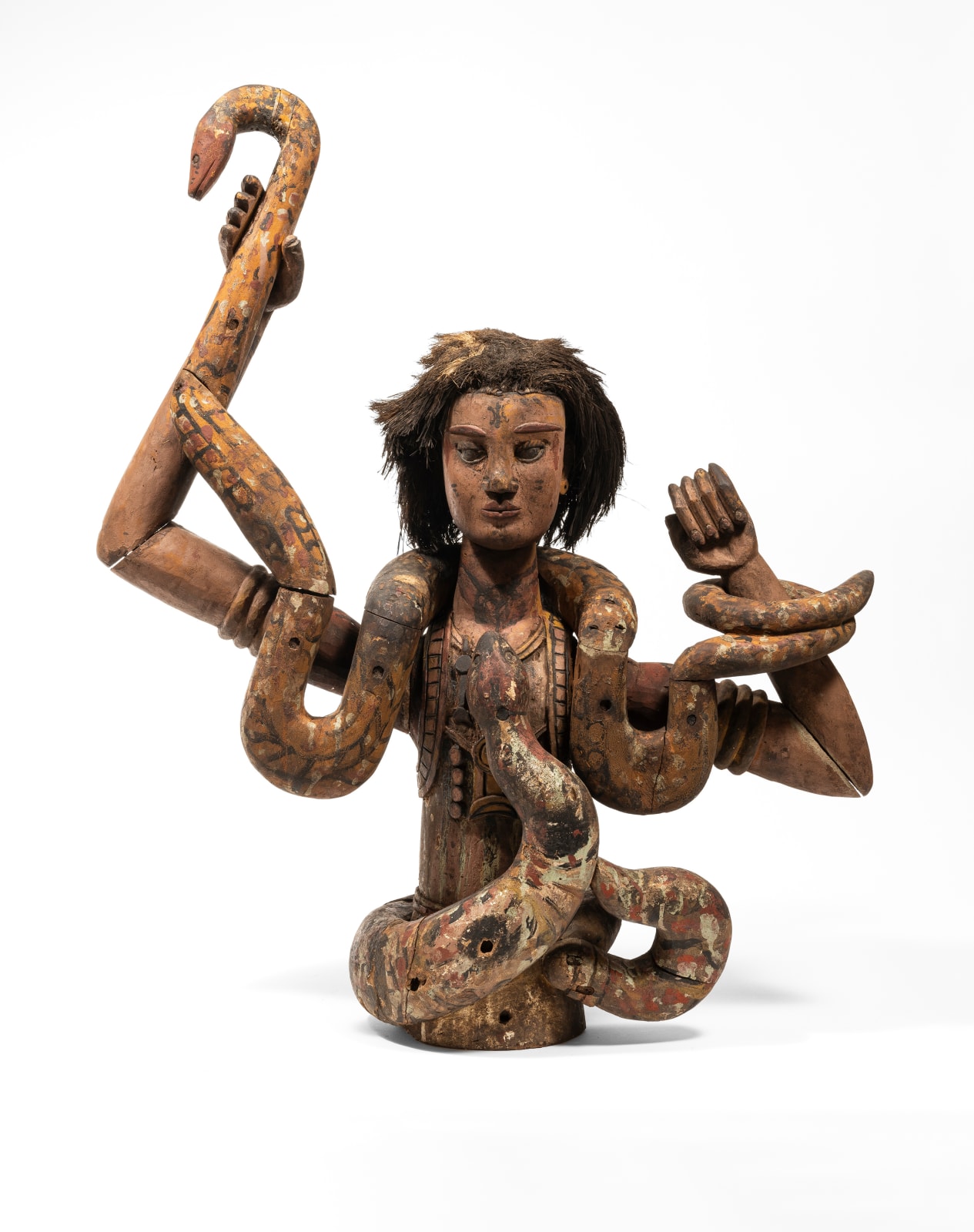Akpan Chukwu of Utu Etim Ekpo, Abak (Annang peoples) or another member of the Chukwu family
Mid 20th century
Wood, fibers
height 32 1/4 in
Further images
Art’s inspiration easily crosses borders, across space and time, the present exceptional ‘Mami Wata’ headdress being a perfect example. For too long African material cultures have been considered as closed systems without any outside influences; yet the origin of their inspirations, as we will see, can go way beyond the usual. ‘Mami Wata’ is such a unique pan-African phenomenon with a long and global history. The artist who carved this magnificent Ibibo headdress from Nigeria was inspired by a then 50-year-old German postcard of an Indian snake charmer active in Hamburg and abroad in the 1890s. The iconography struck a chord and was explicitly copied in a syncretic iconographic style, blending Ibibio stylistic elements with the outside influence. The theme of Mami Wata, appears in myriad forms, including mermaid and snake charmers, with varying devotional practices through sub-Saharan Africa. Henry John Drewal’s 2008 publication “Mami Wata – Arts for Water Spirits in African and Its Diaspora”, coinciding with an exhibition at the Fowler Museum at UCLA in Los Angeles, gives an excellent overview of this phenomenon.
‘Mami Wata’, which can be translated as ‘Mother Water’, is in fact pidgin English. She is said to bring good fortune in the form of money. Her powers, however, extend far beyond economic gain. Although for some she indeed bestows good fortune and statues through monetary wealth, for others, she aids in concerns related to procreation (infertility, impotence, or infant mortality). Mami Wata also provided a spiritual and professional avenue for women to become powerful priestesses and healers of both psycho-spiritual and physical ailments and to assert female agency in a generally male-dominated societies. Henry Drewal called her a multivocal, multifocal symbol with so many resonances that she feeds the imagination, generating, rather than limiting, meanings and significances: nurturing mother; sexy mama; provider of riches; healer of physical and spiritual ills; embodiment of dangers and desires, risks and challenges, dreams and aspirations, fears and forebodings. People were attracted to the seemingly limitless possibilities she represents, and at the same time frightened by her destructive potential. She inspired a vast array of emotions, attitudes, and actions among those who worshipped her, those who fear her, those who study her, and those who create works of art about her. What the Yoruba people say about their culture is also applicable to the histories and significances of Mami Wata: she is like ‘a river that never ends’. (op. cit., p. 25).
Provenance
Private Collection, Côtes d’Armor, France
Karl Benz, Plérin, 7 July 2023, lot 329
Duende Art Projects, Antwerp, Belgium, 2023
let's keep in touch
Join our community & never miss out on a DUENDE moment from now on
* denotes required fields
We will process the personal data you have supplied to communicate with you in accordance with our Privacy Policy. You can unsubscribe or change your preferences at any time by clicking the link in our emails.













